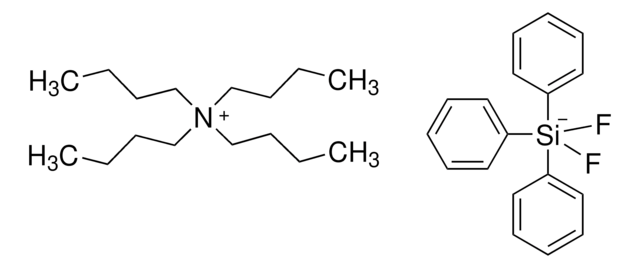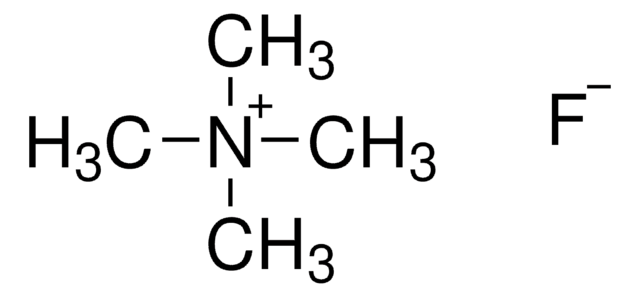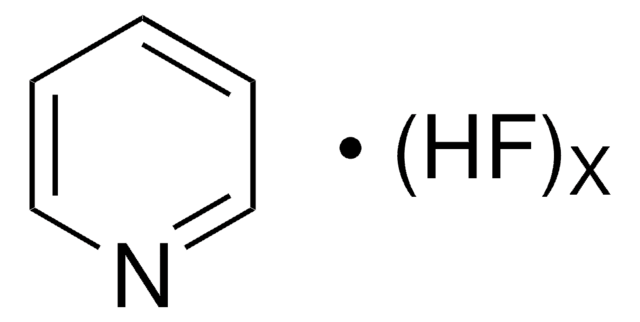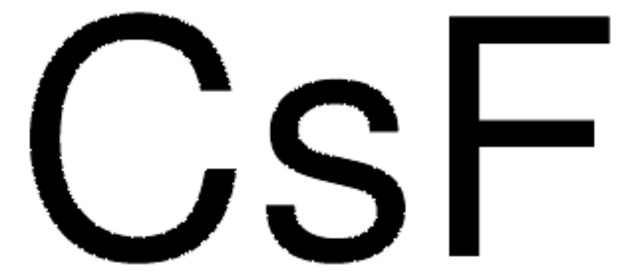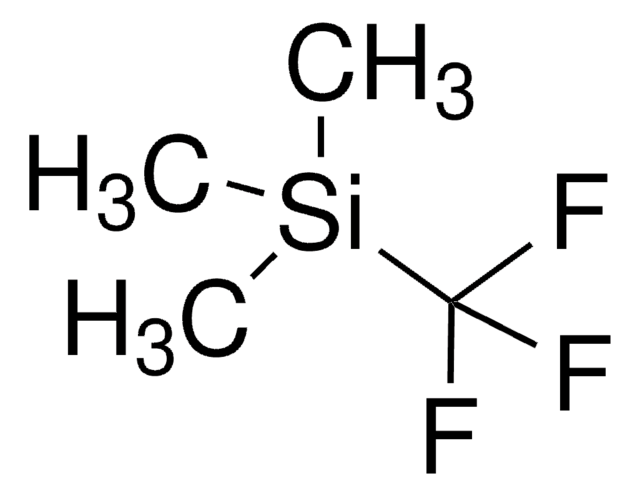250600
Tris(dimethylamino)sulfonium difluorotrimethylsilicate
technical grade
Sinónimos:
TAS-F, TASF, Tris(dimethylamino)sulfur trimethylsilyl difluoride
About This Item
Productos recomendados
grade
technical grade
Quality Level
reaction suitability
reagent type: reductant
storage temp.
2-8°C
SMILES string
C[Si-](C)(C)(F)F.CN(C)[S+](N(C)C)N(C)C
InChI
1S/C6H18N3S.C3H9F2Si/c1-7(2)10(8(3)4)9(5)6;1-6(2,3,4)5/h1-6H3;1-3H3/q+1;-1
InChI key
JMGVTLYEFSBAGJ-UHFFFAOYSA-N
¿Está buscando productos similares? Visita Guía de comparación de productos
General description
Application
It can also be used
- To synthesize deoxyfluoro sugars by reacting with trifluoromethanesulfonyl derivatives of partially protected sugars.
- As a reagent for the fluorination of hydroxyl-containing compounds.
Other Notes
signalword
Danger
hcodes
Hazard Classifications
Skin Corr. 1B
supp_hazards
Storage Class
8A - Combustible corrosive hazardous materials
wgk_germany
WGK 3
flash_point_f
Not applicable
flash_point_c
Not applicable
ppe
Eyeshields, Faceshields, Gloves, type P3 (EN 143) respirator cartridges
Elija entre una de las versiones más recientes:
¿Ya tiene este producto?
Encuentre la documentación para los productos que ha comprado recientemente en la Biblioteca de documentos.
Nuestro equipo de científicos tiene experiencia en todas las áreas de investigación: Ciencias de la vida, Ciencia de los materiales, Síntesis química, Cromatografía, Analítica y muchas otras.
Póngase en contacto con el Servicio técnico